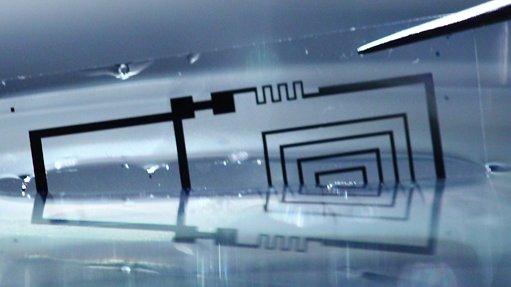Tiny pop-up 'cell playgrounds' fold themselves
- Published
From butterflies to brollies - video simulation courtesy of John Rogers / University of Illinois)
US researchers are building tiny, 3D electronic scaffolds with an unusual new technique, aimed at combining biological and electronic systems.
They make flat silicon cut-outs and stick them onto a stretched rubber platform at carefully chosen points.
When they let the rubber shrink again, the silicon folds into its designed shape like a children's pop-up book.
The technique could be used to make "jungle gyms" for growing, monitoring and stimulating live cells in the lab.
Speaking at the American Physical Society's March Meeting, external in San Antonio, Texas, the team revealed they have successfully coaxed cells to grow and travel along the shapes.
They also unveiled a striking new segmented umbrella shape. Other examples were included when the technique was published in the Science journal, external in January.
Surrealist stylings
John Rogers is a professor of materials and engineering from the University of Illinois at Urbana-Champaign.
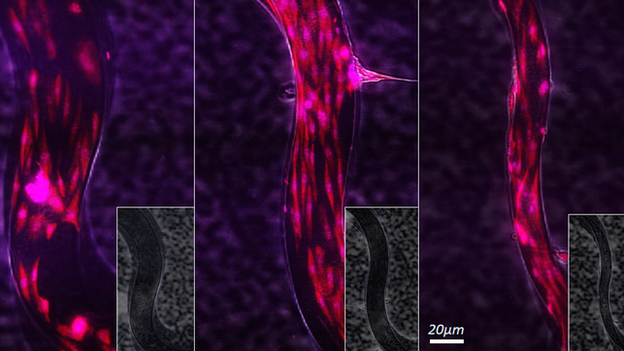
Cell highways: The researchers have shown that cells will grow across the tiny scaffolds

Complicated shapes buckle upwards from a flat, 2D sheet of silicon
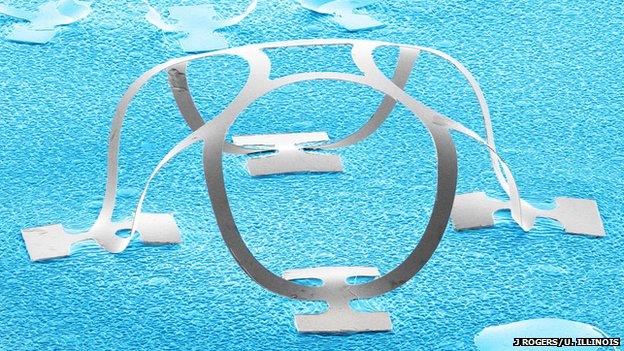
The structures are folded purely by the shrinking rubber sheet they are stuck on

This bizarre umbrella shape was unveiled at the conference in San Antonio
He told reporters at the conference the inspiration came from close to home: "I live in the Midwest and when you think about how you build barns, you build things in two dimensional space - and then you raise them into the third dimension."
The method also shares some principles with the Japanese paper art form kirigami, where paper is both folded (as in origami) and cut.
By changing the starting pattern of silicon and carefully choosing the points of contact, Prof Rogers and his team assembled a "library" of different shapes. They boast nicknames like "basket", "tilted table", "inverted flower" and "starfish".
"It begins to look like paintings by Dali," Prof Rogers said.
All of them are less than 1mm across, and the device-grade silicon used to build them is just 0.001mm thick.
That means they could be particularly useful in a cell biology laboratory - offering a "functional interface" with a growing tissue of cells.
But the team also simply enjoyed the design challenge.
"In some ways, it's exploratory, academic research, to see what we can do in terms of 3D geometries," Prof Rogers told the BBC.
Nonetheless, he and his colleagues have already tested whether cells can grow on the structures, with some success.
And importantly, these little contraptions are made from the same stuff as regular electronic components. There is potential, then, not just to grow cells into a specified 3D shape, but also to record electronic signals from them - or send signals to stimulate them.
This contrasts with anything that could currently be made by a 3D printer, Prof Rogers said.
"We wanted to do things in a way that's compatible with established electronic technology - in high-quality semiconductor materials, not just plastic or ceramic.
"This might provide an opportunity to monitor and stimulate the cells as they grow."
- Published6 March 2015
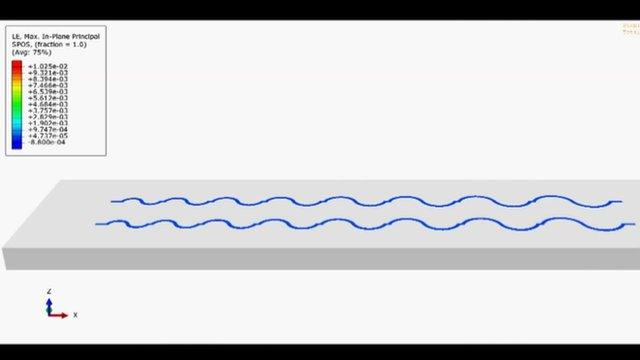
- Published7 August 2014
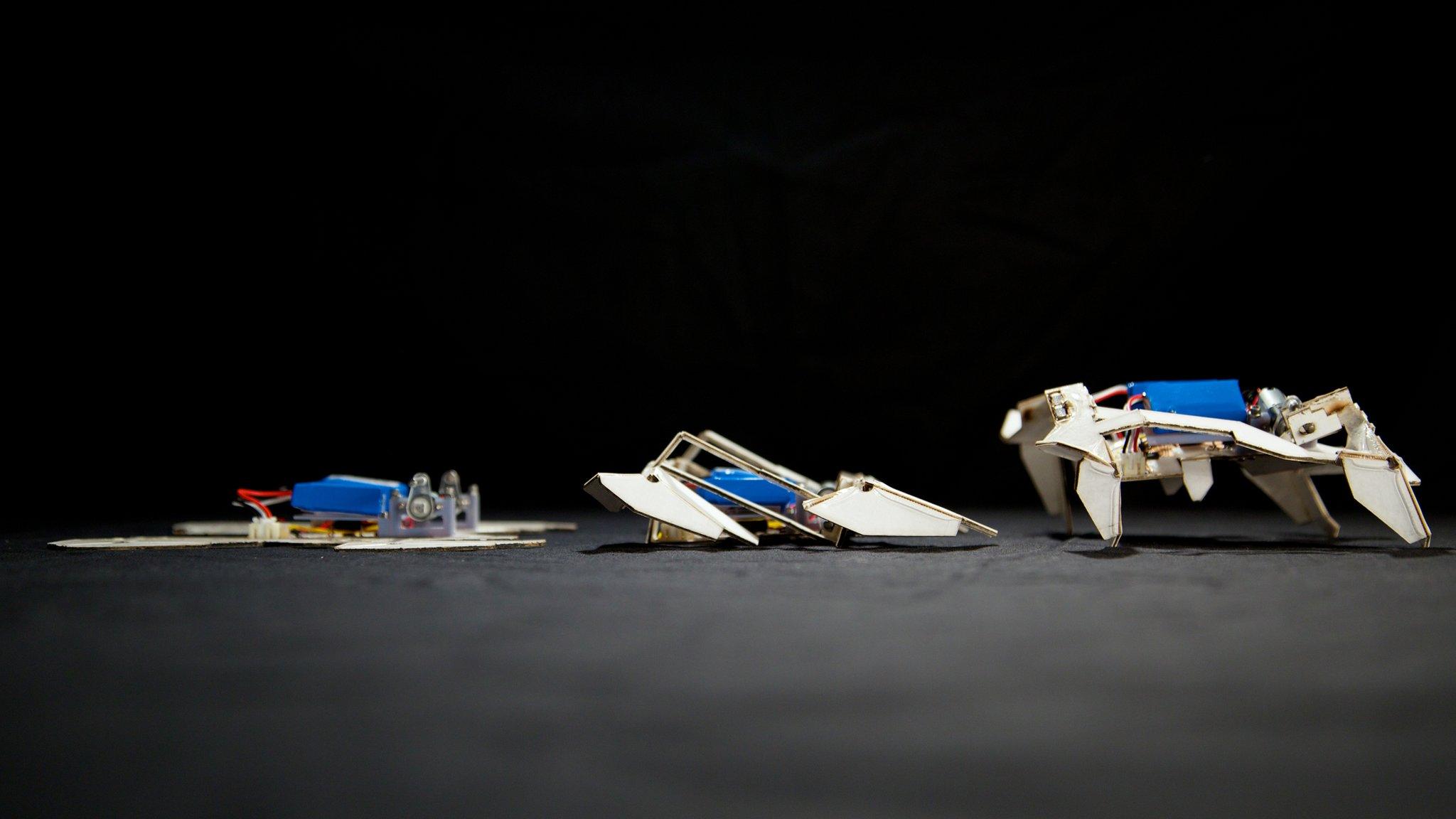
- Published26 February 2013
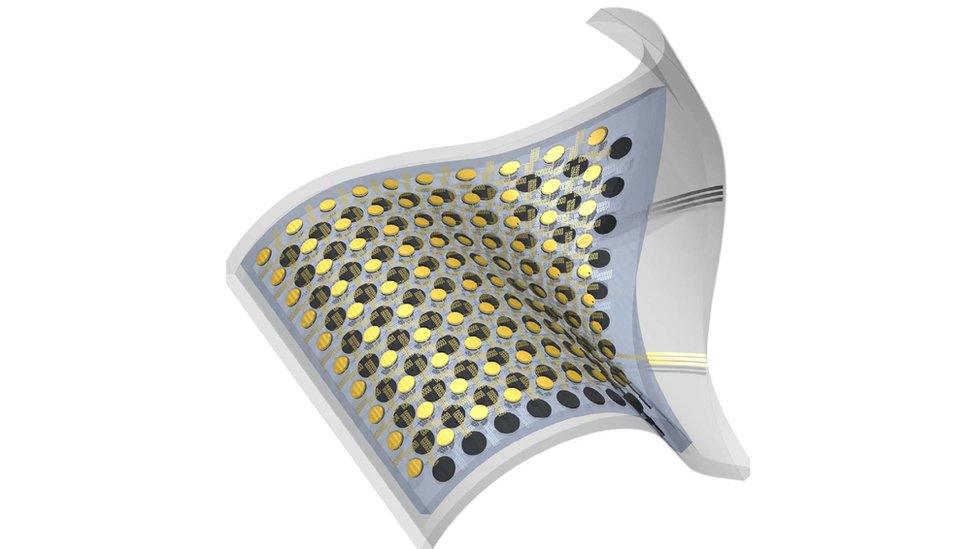
- Published8 January 2013

- Published27 September 2012
